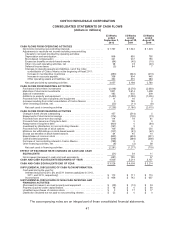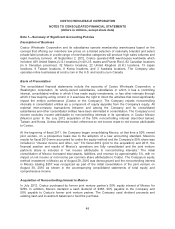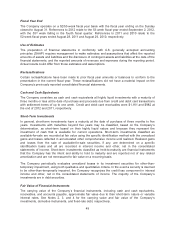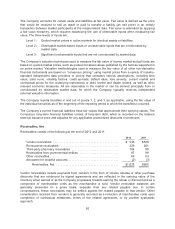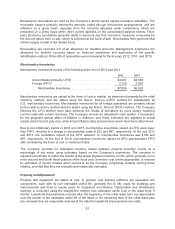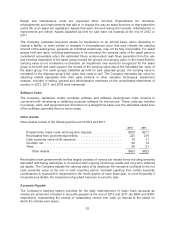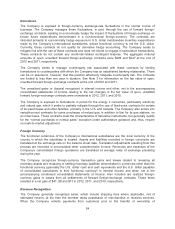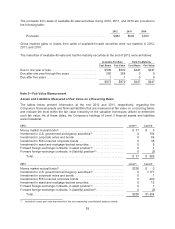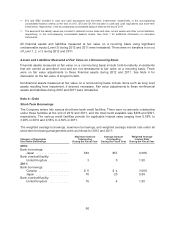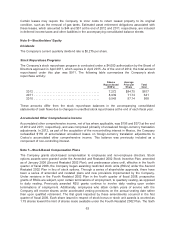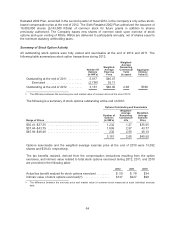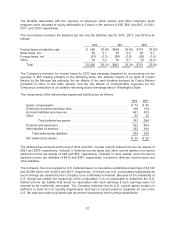Costco 2012 Annual Report Download - page 59
Download and view the complete annual report
Please find page 59 of the 2012 Costco annual report below. You can navigate through the pages in the report by either clicking on the pages listed below, or by using the keyword search tool below to find specific information within the annual report.Income Taxes
The Company accounts for income taxes using the asset and liability method. Deferred tax assets and
liabilities are recognized for the future tax consequences attributed to differences between the financial
statement carrying amounts of existing assets and liabilities and their respective tax bases and tax
credits and loss carry-forwards. Deferred tax assets and liabilities are measured using enacted tax
rates expected to apply to taxable income in the years in which those temporary differences and carry-
forwards are expected to be recovered or settled. The effect on deferred tax assets and liabilities of a
change in tax rates is recognized in income in the period that includes the enactment date. A valuation
allowance is established when necessary to reduce deferred tax assets to amounts expected to be
realized.
The determination of the Company’s provision for income taxes requires significant judgment, the use
of estimates, and the interpretation and application of complex tax laws. Significant judgment is
required in assessing the timing and amounts of deductible and taxable items and the probability of
sustaining uncertain tax positions. The benefits of uncertain tax positions are recorded in the
Company’s consolidated financial statements only after determining a more-likely-than-not probability
that the uncertain tax positions will withstand challenge, if any, from tax authorities. When facts and
circumstances change, the Company reassesses these probabilities and records any changes in the
consolidated financial statements as appropriate. See Note 9 for additional information.
Net Income per Common Share Attributable to Costco
The computation of basic net income per share uses the weighted average number of shares that were
outstanding during the period. The computation of diluted net income per share uses the weighted
average number of shares in the basic net income per share calculation plus the number of common
shares that would be issued assuming exercise and vesting to the participant of all potentially dilutive
common shares outstanding using the treasury stock method for shares subject to stock options and
restricted stock units and the “if converted” method for the convertible note securities.
Stock Repurchase Programs
Repurchased shares of common stock are retired, in accordance with the Washington Business
Corporation Act. The par value of repurchased shares is deducted from common stock and the excess
repurchase price over par value is deducted from additional paid-in capital and retained earnings. See
Note 6 for additional information.
Recently Adopted Accounting Pronouncements
In May 2011, the Financial Accounting Standards Board (FASB) issued guidance related to fair value
measurement that changes the wording used to describe many requirements in GAAP for measuring
and disclosing fair values. Additionally, the amendments clarify the application of existing fair value
measurement requirements. The amended guidance is effective prospectively for interim and annual
periods beginning after December 15, 2011. The Company adopted this guidance at the beginning of
its third quarter of 2012. Adoption of this guidance did not have a material impact on the Company’s
consolidated financial statement disclosures.
Recent Accounting Pronouncements Not Yet Adopted
In June 2011, the FASB issued guidance that eliminates the option to report other comprehensive
income and its components in the statement of changes in equity. Instead, an entity will be required to
either present a continuous statement of net income and other comprehensive income or present the
information in two separate but consecutive statements. The new guidance must be applied
retrospectively and is effective for fiscal years, and interim periods within those years, beginning after
57


